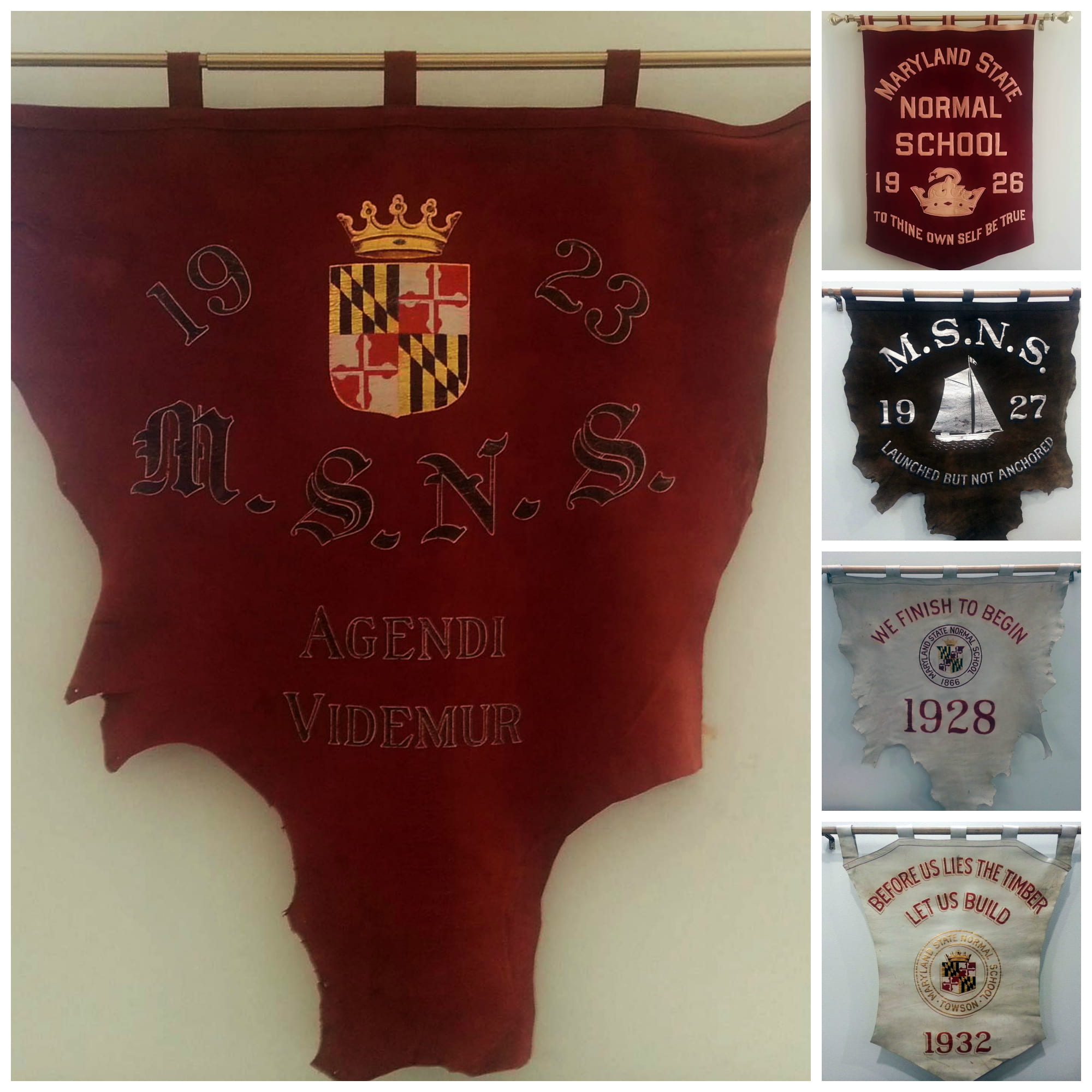Maybe you have a relative who remembers going to “The Teachers College”. Maybe you yourself think of us as “TSC” or “TSU”.

In over 150 years of history, we have had 5 different names and while it may seem arbitrary, the changes have all come about for good reason.
Maryland State Normal School (MSNS): 1866 – 1935
We have a lot of MSNS artifacts in our department.

Without any context, the word “Normal” tends to make people pause. Or giggle. “That’s a pretty weird name, right?” I ask visitors who look at these banners and wonder why in the world a school would call itself “normal”.
But when our school was founded in 1864, there was nothing unusual about the name. Normal schools were standard across the country, and had been since the first was founded in Vermont in 1823.
The term was borrowed from the French institution, the École Normale Supérieure, and “normal” in this instance meant “norms” or standards. MSNS was designed to teach the same things to all students, thereby creating a “standardized” teaching program for all of the teachers in the state of Maryland.
For almost seventy years, the name fit the curriculum.
State Teachers College at Towson (STC): 1935 – 1963
But educational standards were progressing and changes to education meant that by 1934, Maryland passed a law requiring teachers to hold a baccalaureate degree.
The program at MSNS was changed and the school was granted the ability to award Bachelor of Science degrees. Graduates who had received only an MSNS diploma and teaching certificate often returned to STC to fulfill the bachelors degree requirements.


Towson State College (TSC): 1963 – 1976
For almost one hundred years, our mission was to train teachers to work in the state’s public schools. But that all changed after World War II.
The school, seeing both a practical and fiscal need, developed a junior college program to entice returning veterans to spend their GI Bill money at Towson. The program offered classes outside of education to students who could then transfer to a liberal arts institution.
The Baby Boom after World War II meant that states had to re-think specialized schools like teachers colleges. Could the state, facing a dearth of seats in public college classrooms, support five institutions devoted solely to education?
Eventually, it was decided that teachers colleges in Maryland would transition to liberal arts schools, and Towson was in a good place to do so, given the junior college program.
In 1963, STC became TSC, and enrollment began to soar.

Towson State University (TSU): 1976 – 1997
With the expansion of programs, it was felt that the kind of experience Towson now offered deserved the title “University”, suggesting a higher level of education. Dr. Fisher, President at the time, pushed to change the name with the state, but Governor Marvin Mandel made it clear that there should be very specific guidelines delineating the differences between state colleges and state universities.
After some back and forth, Towson was granted university status in July of 1976.

Towson University (TU): 1997 – Present
Politics entered the picture again during our most recent name change.
Certainly part of the reason the school wanted to remove the word “State” from the name had to do with trying to appeal to non-local prospective students. The word “State” rang provincial to many ears.
But the other part was a direct response by the school administration to the amount of money the state of Maryland now contributed to the school’s coffers. Could a school that received so little support from the state still be considered a state school?
Again, the name change happened while students were on break for the summer in July.

When students returned to classes in September, there was a celebration to commemorate this latest, and possibly last, name change.
